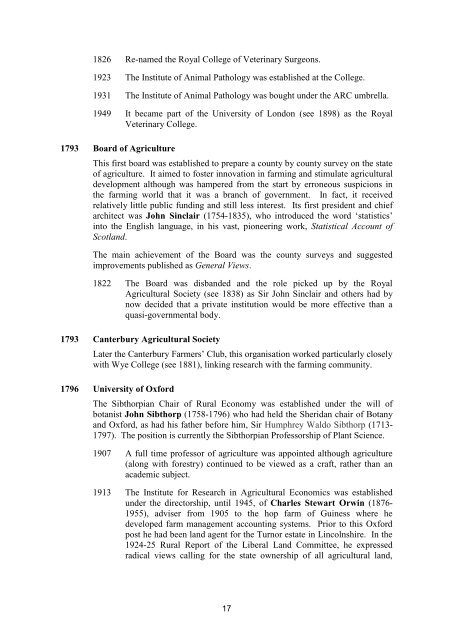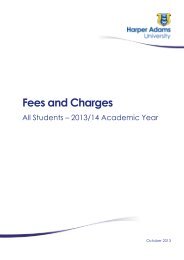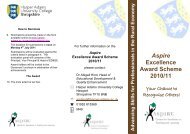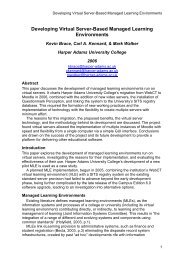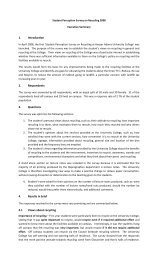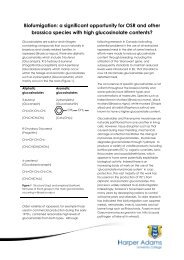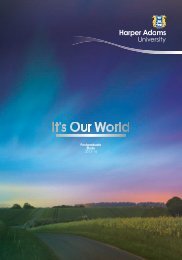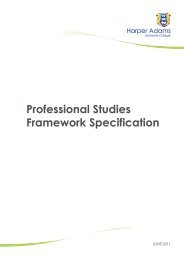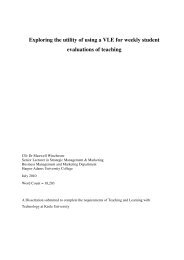a short history of agricultural education and research
a short history of agricultural education and research
a short history of agricultural education and research
Create successful ePaper yourself
Turn your PDF publications into a flip-book with our unique Google optimized e-Paper software.
1826 Re-named the Royal College <strong>of</strong> Veterinary Surgeons.1923 The Institute <strong>of</strong> Animal Pathology was established at the College.1931 The Institute <strong>of</strong> Animal Pathology was bought under the ARC umbrella.1949 It became part <strong>of</strong> the University <strong>of</strong> London (see 1898) as the RoyalVeterinary College.1793 Board <strong>of</strong> AgricultureThis first board was established to prepare a county by county survey on the state<strong>of</strong> agriculture. It aimed to foster innovation in farming <strong>and</strong> stimulate <strong>agricultural</strong>development although was hampered from the start by erroneous suspicions inthe farming world that it was a branch <strong>of</strong> government. In fact, it receivedrelatively little public funding <strong>and</strong> still less interest. Its first president <strong>and</strong> chiefarchitect was John Sinclair (1754-1835), who introduced the word ‘statistics’into the English language, in his vast, pioneering work, Statistical Account <strong>of</strong>Scotl<strong>and</strong>.The main achievement <strong>of</strong> the Board was the county surveys <strong>and</strong> suggestedimprovements published as General Views.1822 The Board was disb<strong>and</strong>ed <strong>and</strong> the role picked up by the RoyalAgricultural Society (see 1838) as Sir John Sinclair <strong>and</strong> others had bynow decided that a private institution would be more effective than aquasi-governmental body.1793 Canterbury Agricultural SocietyLater the Canterbury Farmers’ Club, this organisation worked particularly closelywith Wye College (see 1881), linking <strong>research</strong> with the farming community.1796 University <strong>of</strong> OxfordThe Sibthorpian Chair <strong>of</strong> Rural Economy was established under the will <strong>of</strong>botanist John Sibthorp (1758-1796) who had held the Sheridan chair <strong>of</strong> Botany<strong>and</strong> Oxford, as had his father before him, Sir Humphrey Waldo Sibthorp (1713-1797). The position is currently the Sibthorpian Pr<strong>of</strong>essorship <strong>of</strong> Plant Science.1907 A full time pr<strong>of</strong>essor <strong>of</strong> agriculture was appointed although agriculture(along with forestry) continued to be viewed as a craft, rather than anacademic subject.1913 The Institute for Research in Agricultural Economics was establishedunder the directorship, until 1945, <strong>of</strong> Charles Stewart Orwin (1876-1955), adviser from 1905 to the hop farm <strong>of</strong> Guiness where hedeveloped farm management accounting systems. Prior to this Oxfordpost he had been l<strong>and</strong> agent for the Turnor estate in Lincolnshire. In the1924-25 Rural Report <strong>of</strong> the Liberal L<strong>and</strong> Committee, he expressedradical views calling for the state ownership <strong>of</strong> all <strong>agricultural</strong> l<strong>and</strong>,17


